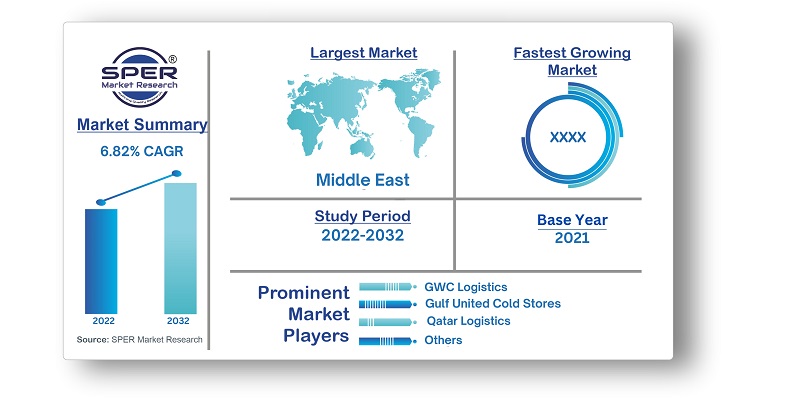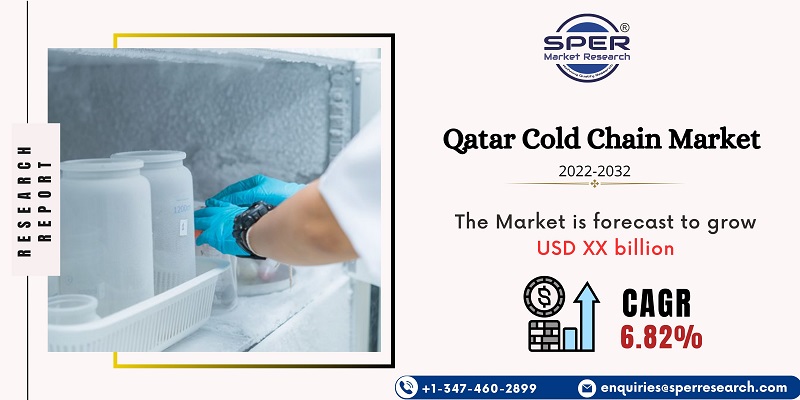
Qatar Cold Chain Market Growth, Size, Trends, Revenue, Scope, Challenges and Future Outlook
Qatar Cold Chain Market Size- By Type Of Market, By Cold Storage, By Ownership, By Cold Transport- Regional Outlook, Competitive Strategies and Segment Forecast to 2032
| Published: Feb-2023 | Report ID: AMIN2342 | Pages: 1 - 106 | Formats*: |
| Category : Automotive & Transportation | |||
- Infrastructure Development: Qatar has been investing in the development of logistics infrastructure, including warehouses, cold storage facilities, and transportation networks. This infrastructure expansion is crucial for maintaining the integrity of temperature-sensitive products during storage and transportation. The construction of new ports, airports, and logistics hubs further facilitates the smooth flow of goods within the cold chain.
- Increasing Retail Sector: Qatar is experiencing significant growth in its retail sector, including supermarkets, hypermarkets, and convenience stores. These retailers require reliable cold chain services to ensure the availability of fresh produce, chilled and frozen foods, and dairy products. The expansion of the retail sector, coupled with the increasing consumer demand for a wide variety of perishable goods, is driving the need for efficient cold chain logistics and storage solutions.


| Report Metric | Details |
| Market size available for years | 2019-2032 |
| Base year considered | 2021 |
| Forecast period | 2022-2032 |
| Segments covered | By Type of Market, By Cold Storage, By Ownership, By Cold Transport |
| Regions covered | Al Gharafa, Dafna and West bay, Al Wakrah & Barwa Village, Al Aziziyah and Al Waab, Abu Hamour, Mesaimeer and Ain Khalid, Muaither, Pearl Qatar, Al Sadd and Al Nasr |
| Companies Covered | GWC Logistics, Gulf United Cold Stores, Qatar Logistics, Qatar Logistical Services, Tokyo, Freight Services, JSL Global, Milaha Cold Storage, Western Gulf Agency, GAC |
- Cold storage providers
- Food producers and manufacturers
- Government agencies and regulatory bodies
- Logistics and transportation companies
- Pharmaceutical companies
- Refrigerated trucking companies
| By Type of Market: |
|
| By Cold Storage: |
|
| By Ownership: |
|
| By Cold Transport: |
|
- Qatar Cold Chain Market Size (FY’2022-FY’2032)
- Overview of Qatar Cold Chain Market
- Segmentation of Qatar Cold Chain Market By Type of Market (Meat/Seafood, Dairy Products, Pharmaceuticals, Vegetables/Fruits)
- Segmentation of Qatar Cold Chain Market By Cold Storage (Ambient, Chilled, Frozen)
- Segmentation of Qatar Cold Chain Market By Ownership (Contract, Integrated)
- Segmentation of Qatar Cold Chain Market By Cold Transport (Sea, Air, Land)
- Statistical Snap of Qatar Cold Chain Market
- Expansion Analysis of Qatar Cold Chain Market
- Problems and Obstacles in Qatar Cold Chain Market
- Competitive View of the Qatar Cold Chain Market
- Effects of COVID-19 and Demonetization on Qatar Cold Chain Market
- Details on Current Investment in Qatar Cold Chain Market
- Competitive Analysis of Qatar Cold Chain Market
- Key Market Players in the Qatar Cold Chain Market
- SWOT Analysis of Qatar Cold Chain Market
- Qatar Cold Chain Market Future Outlook and Projections (FY’2022-FY’2032)
- Recommendations from Analyst
1.1. Scope of the report1.2. Market segment analysis
2.1 Research data source2.1.1 Secondary data2.1.2 Primary data2.1.3 SPER’s internal database2.1.4 Premium insight from KOL’s2.2 Market size estimation2.2.1 Top-down and Bottom-up approach2.3 Data triangulation
4.1. Driver, Restraint, Opportunity and Challenges analysis4.1.1 Drivers4.1.2 Restraints4.1.3 Opportunities
4.1.4 Challenges
4.2. COVID-19 Impacts of the Qatar Cold Chain Market
5.1. SWOT analysis5.1.1 Strengths5.1.2 Weaknesses5.1.3 Opportunities5.1.4 Threats5.2. PESTEL analysis5.2.1 Political landscape5.2.2 Economic landscape5.2.3 Social landscape5.2.4 Technological landscape5.2.5 Environmental landscape5.2.6 Legal landscape5.3. PORTER’S five forces analysis5.3.1 Bargaining power of suppliers5.3.2 Bargaining power of Buyers5.3.3 Threat of Substitute5.3.4 Threat of new entrant5.3.5 Competitive rivalry5.4. Heat map analysis
6.1 Qatar Cold Chain Manufacturing Base Distribution, Sales Area, Product Type6.2 Mergers & Acquisitions, Partnerships, Product Launch, and Collaboration in Qatar Cold Chain Market
7.1 Meat/Seafood7.2 Dairy Products7.3 Pharmaceuticals7.4 Vegetables/Fruits7.5 Others
8.1 Chilled8.2 Ambient8.3 Frozen
9.1 Integrated9.2 Contract
10.1 By Mode of Freight10.1.1 Domestic10.1.2 Sea10.1.3 Air10.2 By Type of Freight10.2.1 Domestic10.2.2 International10.3 By Type of Air Freight10.3.1 Domestic10.3.2 International10.4 By Type of Land Freight10.4.1 Domestic10.4.2 International
11.1 Qatar Cold Chain Market and Market Share by Region (2019-2025)11.2 Qatar Cold Chain Market and Market Share by Region (2026-2032)11.3 Al Gharafa11.4 Dafna and West bay11.5 Al Wakrah & Barwa Village11.6 Al Aziziyah and Al Waab11.7 Abu Hamour11.8 Mesaimeer and Ain Khalid11.9 Muaither11.10 Pearl Qatar11.11 Al Sadd11.12 Al Nasr
12.1 GAC12.1.1 Company details12.1.2 Financial outlook12.1.3 Product summary12.1.4 Recent developments12.2 Gulf United Cold Stores12.2.1 Company details12.2.2 Financial outlook12.2.3 Product summary12.2.4 Recent developments12.3 GWC Logistics12.3.1 Company details12.3.2 Financial outlook12.3.3 Product summary12.3.4 Recent developments12.4 JSL Global12.4.1 Company details12.4.2 Financial outlook12.4.3 Product summary12.4.4 Recent developments12.5 Milaha Cold Storage12.5.1 Company details12.5.2 Financial outlook12.5.3 Product summary12.5.4 Recent developments12.6 Qatar Logistics12.6.1 Company details12.6.2 Financial outlook12.6.3 Product summary12.6.4 Recent developments12.7 Qatar Logistical Services12.7.1 Company details12.7.2 Financial outlook12.7.3 Product summary12.7.4 Recent developments12.8 Tokyo Freight Services12.8.1 Company details12.8.2 Financial outlook12.8.3 Product summary12.8.4 Recent developments
12.9 Western Gulf Agency
12.9.1 Company details12.9.2 Financial outlook12.9.3 Product summary12.9.4 Recent developments
SPER Market Research’s methodology uses great emphasis on primary research to ensure that the market intelligence insights are up to date, reliable and accurate. Primary interviews are done with players involved in each phase of a supply chain to analyze the market forecasting. The secondary research method is used to help you fully understand how the future markets and the spending patterns look likes.
The report is based on in-depth qualitative and quantitative analysis of the Product Market. The quantitative analysis involves the application of various projection and sampling techniques. The qualitative analysis involves primary interviews, surveys, and vendor briefings. The data gathered as a result of these processes are validated through experts opinion. Our research methodology entails an ideal mixture of primary and secondary initiatives.



Frequently Asked Questions About This Report
PLACE AN ORDER
Year End Discount
Sample Report
Pre-Purchase Inquiry
NEED CUSTOMIZATION?
Request CustomizationCALL OR EMAIL US
100% Secure Payment






Related Reports
Our Global Clients
Our data-driven insights have influenced the strategy of 200+ reputed companies across the globe.






















